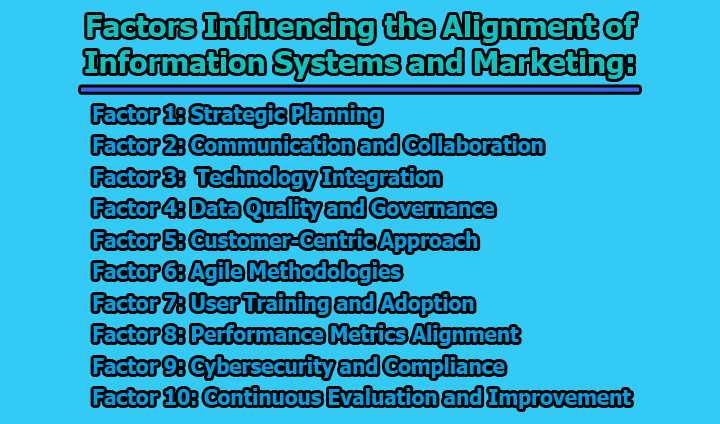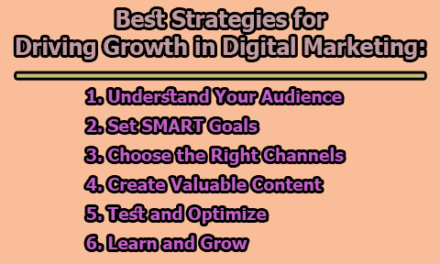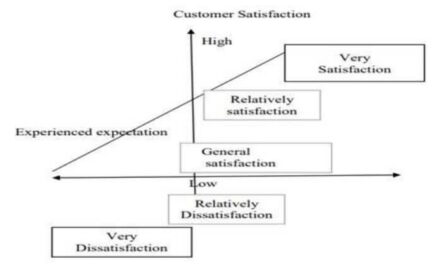Factors Influencing the Alignment of Information Systems and Marketing:
In the rapidly evolving landscape of business, the alignment between information systems (IS) and marketing has become imperative for organizations aiming to thrive in the digital era. The synergy between these two crucial facets can significantly enhance overall organizational performance, customer satisfaction, and competitive advantage. In the rest of this article, we will explore key factors influencing the alignment of information systems and marketing.
Factor 1: Strategic Planning:
Effective alignment between IS and marketing begins with strategic planning that ensures both departments are working in tandem towards overarching business goals. Organizations must establish a clear understanding of how IS can support and enhance marketing initiatives. This involves aligning IT strategies with marketing objectives, such as increasing brand awareness, customer engagement, or sales.
Strategic planning should involve key stakeholders from both the marketing and IS teams to foster collaboration and ensure that technological investments are directly aligned with the organization’s vision. The plan should encompass short-term and long-term goals, outlining how IS will contribute to marketing strategies and vice versa.
For example, if a marketing goal is to enhance customer engagement through targeted campaigns, the strategic plan should detail how IS will implement or enhance customer relationship management (CRM) systems, analytics tools, and other technologies to support this objective. The strategic planning phase sets the foundation for a cohesive approach, ensuring that both departments are moving in the same direction.
Factor 2: Communication and Collaboration:
Open and effective communication between marketing and IS teams is paramount for successful alignment. Regular meetings, collaborative projects, and shared objectives create an environment where both departments understand each other’s needs and challenges.
Establishing a communication framework involves creating channels for ongoing dialogue, whether through regular team meetings, cross-functional workshops, or digital collaboration platforms. This ensures that marketing goals are communicated to the IS team, and technological capabilities are clearly understood by marketing professionals.
Collaboration extends beyond mere communication—it involves joint projects where marketing and IS teams work together to achieve common objectives. For instance, the development of a customer-centric mobile application may require close collaboration between marketing experts who understand customer preferences and IS professionals who can implement the necessary technological features.
By fostering a culture of communication and collaboration, organizations break down silos, reduce misunderstandings, and create a shared sense of purpose between marketing and IS teams.
Factor 3: Technology Integration:
The integration of marketing and IS technologies is a fundamental aspect of alignment. This involves ensuring that the various tools and platforms used by marketing and IS teams seamlessly work together, providing a unified and comprehensive view of data.
For example, customer relationship management (CRM) systems play a pivotal role in aligning marketing and IS efforts. These systems consolidate customer data, allowing marketing teams to create targeted campaigns based on accurate and up-to-date information. Integration may also extend to marketing automation tools, data analytics platforms, and content management systems.
Technology integration is not just about selecting the right tools but also about implementing them in a way that maximizes their synergies. This may involve customization, configuration, and, in some cases, the development of interfaces to ensure smooth data flow between different systems. The goal is to create an ecosystem where marketing and IS technologies complement each other, enhancing overall organizational efficiency.
Factor 4: Data Quality and Governance:
The quality of data is a critical factor influencing the success of IS and marketing alignment. Establishing robust data governance practices ensures that the information used by both departments is accurate, reliable, and aligned with organizational standards.
Data governance involves defining clear data ownership, establishing data quality standards, and implementing processes to maintain data integrity. This is particularly crucial when dealing with customer data, as marketing efforts heavily rely on a deep understanding of customer behavior, preferences, and demographics.
For instance, a data governance framework may outline procedures for data validation, data cleansing, and the management of data quality issues. It should also address data security concerns, ensuring that sensitive customer information is handled in compliance with relevant regulations.
By prioritizing data quality and governance, organizations create a foundation for effective decision-making within both marketing and IS departments. Accurate and reliable data supports targeted marketing campaigns, personalized customer experiences, and strategic decision-making.
Factor 5: Customer-Centric Approach:
A customer-centric approach is at the heart of successful IS and marketing alignment. Both departments should prioritize understanding customer needs, preferences, and behaviors, and leverage technology to enhance the overall customer experience.
This alignment requires a deep collaboration between marketing, which gathers customer insights, and IS, which implements the technological solutions to meet those insights. For example, if marketing identifies a need for personalized communication based on customer behavior, IS must implement systems that enable dynamic content delivery or personalized recommendations.
Additionally, a customer-centric approach involves breaking down data silos to create a unified customer view. This may include integrating data from various touchpoints, such as online interactions, social media, and customer support, to create a holistic understanding of the customer journey.
By aligning technology solutions with the goal of improving customer experiences, organizations not only enhance customer satisfaction but also gain a competitive edge in a market where customer expectations are continually evolving. This approach ensures that IS and marketing efforts are not only aligned with each other but, more importantly, aligned with the evolving needs and expectations of the end consumer.
Factor 6: Agile Methodologies:
In the dynamic and fast-paced landscape of business, adopting agile methodologies becomes crucial for achieving and maintaining alignment between IS and marketing. Agile methodologies emphasize flexibility, collaboration, and adaptability, enabling teams to respond rapidly to changing market dynamics and customer needs.
Agile development frameworks, such as Scrum or Kanban, can be applied to both IS and marketing processes. This approach allows for iterative development and continuous improvement, ensuring that teams can quickly adjust their strategies and tactics based on real-time feedback.
For instance, if a marketing campaign requires rapid adjustments due to shifts in consumer behavior or market trends, an agile approach enables IS teams to respond promptly, making necessary modifications to technology solutions, data analytics, or digital platforms. This responsiveness is crucial for staying ahead in industries where agility is a competitive advantage.
Factor 7: User Training and Adoption:
Effective alignment between marketing and information systems involves not only technological integration but also ensuring that end-users from both departments are proficient in using the implemented systems. Comprehensive user training programs should be put in place to empower marketing and IS teams to leverage technology to its full potential.
Training programs should cover not only the technical aspects of the systems but also provide insights into how these technologies align with organizational goals. For instance, marketing professionals should understand how to extract meaningful insights from analytics platforms, while IS teams should grasp the specific marketing objectives driving system requirements.
Moreover, fostering a culture of continuous learning and skill development is essential. As technologies evolve, regular training sessions and updates can ensure that both marketing and IS teams stay abreast of the latest features and functionalities, maximizing the impact of technology on overall business performance.
Factor 8: Performance Metrics Alignment:
Alignment between IS and marketing extends to shared performance metrics and key performance indicators (KPIs). Establishing common metrics ensures that both departments are working towards the same goals and allows the organization to measure the effectiveness of their alignment efforts.
For example, if the marketing team is focused on increasing customer engagement, IS KPIs should align with this objective. Metrics such as system uptime, website performance, and data processing speed become critical indicators of IS’s contribution to marketing goals.
Regular performance reviews, conducted collaboratively between marketing and IS teams, help identify areas of improvement and ensure that both departments are held accountable for their contributions. This alignment of performance metrics facilitates a cohesive approach, emphasizing collective success rather than individual achievements.
Factor 9: Cybersecurity and Compliance:
As organizations increasingly rely on technology for marketing and information systems, cybersecurity and regulatory compliance become paramount. Ensuring alignment in these areas requires collaboration between marketing and IS to create a secure and compliant technological environment.
Both departments must work together to understand and address cybersecurity risks associated with customer data, online transactions, and digital marketing channels. This collaboration involves implementing robust cybersecurity measures, conducting regular security audits, and staying vigilant against emerging threats.
Furthermore, alignment in compliance efforts ensures that both marketing and IS activities adhere to relevant regulations, such as data protection laws. This includes obtaining explicit consent for data usage in marketing campaigns, safeguarding customer privacy, and ensuring that technology solutions comply with industry-specific standards.
By prioritizing cybersecurity and compliance in a collaborative manner, organizations build trust with their customers and regulators, safeguarding both their reputation and legal standing.
Factor 10: Continuous Evaluation and Improvement:
Achieving and sustaining alignment between information systems and marketing is an ongoing process that requires continuous evaluation and improvement. Regular assessments of the effectiveness of IS in supporting marketing initiatives, feedback loops, and a commitment to adapt and evolve are essential for long-term success.
Organizations should establish mechanisms for periodic reviews, incorporating input from both marketing and IS teams as well as key stakeholders. These reviews should assess the impact of technology on marketing outcomes, identify areas for improvement, and explore emerging opportunities for innovation.
Additionally, organizations should foster a culture that encourages experimentation and learning from both successes and failures. This iterative approach to alignment ensures that strategies and technologies can be refined over time, keeping pace with evolving market trends and customer expectations.
Consequently, a commitment to continuous evaluation and improvement ensures that the alignment between information systems and marketing remains dynamic, responsive, and capable of delivering sustained business value.
In conclusion, the alignment of information systems and marketing is not a one-time task but an ongoing journey that requires commitment, communication, and collaboration. Organizations that successfully integrate these crucial functions gain a competitive edge, leveraging technology to enhance customer experiences, drive innovation, and achieve sustainable growth in the digital age.

Assistant Teacher at Zinzira Pir Mohammad Pilot School and College










